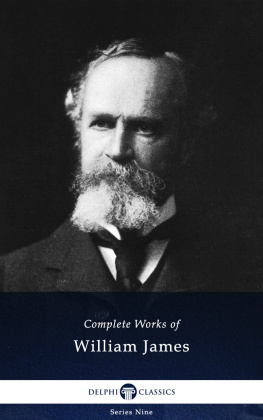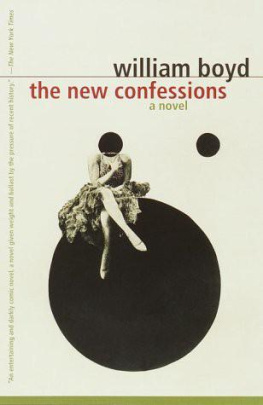WONDERS OF ELECTRICITY
By JAMES P. BOYD, A.M., L.B.
I. AT THE DAWN OF THE CENTURY.
When, in his Midsummer Nights Dream, Shakespeare placed in the mouth of Puck, prince of fairies, the playful speech,
Ill put a girdle round about the earth
In forty minutes,
he had no thought that the undertaking of a boastful and prankish sprite could ever be outdone by human agency. Could the immortal bard have lived to witness the time when the girdling of the earth by means of the electric current became easier and swifter than elfin promise or possibility, he must have speedily remodeled his splendid comedy and denied to the world its delightful, fairy-like features.
An old and charming story runs, that Aladdin, son of a widow of Bagdad, became owner of a magic lamp, by means of whose remarkable powers he could bring to his instant aid the services of an all-helpful genie. When Aladdin wished for aid of any kind, he had but to rub the lamp. At once the genie appeared to gratify his desires. By means of the lamp Aladdin could hear the faintest whisper thousands of miles away. He could annihilate both time and space, and in a twinkling could transfer himself to the tops of the highest mountains. How the charm of this ancient story is lost in the presence of that marvelous realism which marks the achievements of modern electrical science!
The earliest known observations on that subtle mystery which pervades all nature, that silent energy whose phenomena and possibilities are limitless, and before which even the wisest must stand in awe, are attributed to Thales, a scholar of Miletus, in Greece, some 600 years B. C. On rubbing a piece of amber against his clothing, he observed that it gained the strange property of at first attracting and then repelling light objects brought near to it. His observations led to nothing practical, and no historic mention of20 electrical phenomena is found till the time of Theophrastus (B. C. 341), who wrote that amber, when rubbed, attracted straws, small sticks, and even thin pieces of copper and iron. Both Aristotle and Pliny speak of the electric eel as having power to benumb animals with which it comes in contact.
Thus far these simple phenomena only had been mentioned. There was no study of electric force, no recognition of it as such, or as we know it and turn it to practical account to-day. This seems quite strange when we consider the culture and power to investigate of the Egyptians, Phnicians, Greeks, and Romans. True, a few fairy-like stories of how certain persons emitted sparks from their bodies, or were cured of diseases by shocks from electric eels, are found scattered through their literatures, but they failed to follow the way to electrical science pointed out to them by Thales. Even in the Middle Ages, when a few scientists and writers saw fit to speak of electrical phenomena as observed by the ancients, and even ventured to speculate upon them in their crude way, there were no practical additions made to the science, and the ground laid as fallow as it had done since the creation.
OLD FRANKLIN ELECTRICAL MACHINE.
(By permission of Franklin Institute.)
After a lapse of more than two thousand years from the experiment of Thales, Dr. Gilbert, physician to Queen Elizabeth (A. D. 15331603), took up the study of amber and various other substances which, when subjected to friction, acquired the property of first, attracting and then repelling light bodies brought near them. He published his observations in a little book called De Magnete, in the year A. D. 1600, and thus became the first author of a work upon electricity. In this unique and initial work upon simple electrical effects, the author added greatly to the number of substances that could be electrified by friction, and succeeded in establishing the different degrees of force with which they could be made to attract or repel light bodies brought near them.
Fortunately for electrical science, and for that matter all sciences, about21 this time the influence of Lord Bacons Inductive Philosophy began to be felt by investigators and scientific men. Before that, the causes of natural phenomena had not been backed up by repeated experiments amounting to practical proofs, but had been accounted for, if at all, by sheer guesses or whimsical reasons. Bacons method introduced hard, cold, constant experiment as the only sure means of finding out exactly the causes of natural phenomena; and not only this, but the necessity of series upon series of experiments, each based upon the results of the former, and so continuing, link by link, till, from a comparison of the whole, some general principle or truth could be drawn that applied to all. This inductive method of scientific research gave great impetus to the study of every branch of science, and especially to the unfolding of infallible and practical laws governing the phenomena of nature.
For very many years electrical experiments followed the lines laid down by Dr. Gilbert; that is, the finding of substances that could be excited or electrified by friction. By and by such substances came to be called electrics, and it became a part of the crude electrical science of the time to compute the force with which these electrics, when excited, attracted or repelled other substances near them. Among the ablest of these investigators were Robert Boyle, author of Experiments on the Origin of Electricity, Sir Isaac Newton, Otto von Guericke, and Francis Hawksbee, the last of whom communicated his experiments to the English Royal Society in 1705. Otto von Guericke used a hard roll of sulphur as an electric. He caused it to revolve rapidly while he rubbed or excited it with his hand. Newton and Hawksbee used a revolving glass globe in the same way, and thus became the parents of the modern and better equipped electrical machine used for school purposes.
The next step in electrical discovery, and one which marks an epoch in the history of the science, was made by Stephen Gray, of England, in 1729. To him is due the credit of finding out that electricity from an excited glass cylinder could be conducted away from it to objects at a remote distance. Though he used only a packthread as a conductor, he thus carried electricity to a distance of several hundred feet, and his novel discovery opened up what, for the time, was a brilliant series of experiments in England and throughout France and Germany. Out of these experiments came the knowledge that some substances were natural conductors of electricity, while others were non-conductors; and that the non-conductors were the very substancesglass, resin, sulphur, etc.which were then in popular use as electrics. Here was laid the foundation of those after-discoveries which led to the selection of copper, iron, and other metals as the natural and therefore best conductors of electricity, and glass, etc., as the best insulators or non-conductors.









